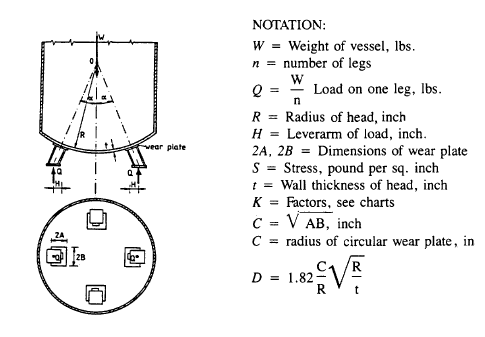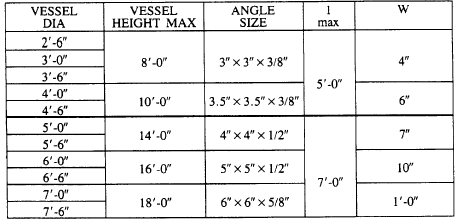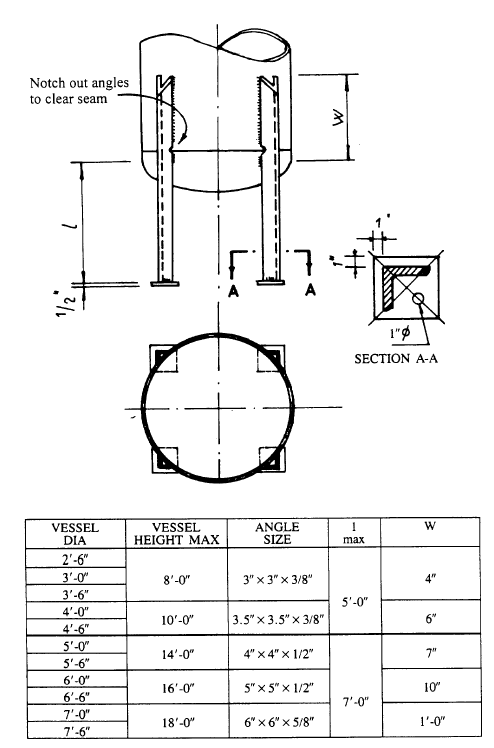Hello all, I hope someone here can help me, forgive me if this is the wrong forum to post such a question. For background, I am a chemical engineer but I've been tasked with mechanically designing a reactor (pressure vessel) so I'm not too used to mechanical designs so I'm here for some assistance.
Information about my vessel:
Diameter = 1.5m
Ellipsoidal heads
Height = 2m
Design pressure ~ 25 bars
So as the title suggests, I'm trying to design some supports for this vessel. I'm using Pressure Vessel Handbook 10th Ed by Megyesy as reference. This is the image that they provide:

My questions are:
R = radius of head, is the centre of this circle the centre of the vessel?
Is S the tensile strength of the material?
H = leverarm of load, what does this mean?
A and B aren't clear, are they the dimensions of the base plates on the bottom of the leg support?
The end of the calculations don't seem to yield anything of importance.. just that the sum of the stresses do not exceed the stress value of the girth seam, does that mean the stress calculations are just used to check if leg support is viable?
Finally, this table:

mentions an angle size, what angle is this, it doesn't even mention what angle...
If anyone can help I'll be very grateful.
Thanks
Information about my vessel:
Diameter = 1.5m
Ellipsoidal heads
Height = 2m
Design pressure ~ 25 bars
So as the title suggests, I'm trying to design some supports for this vessel. I'm using Pressure Vessel Handbook 10th Ed by Megyesy as reference. This is the image that they provide:

My questions are:
R = radius of head, is the centre of this circle the centre of the vessel?
Is S the tensile strength of the material?
H = leverarm of load, what does this mean?
A and B aren't clear, are they the dimensions of the base plates on the bottom of the leg support?
The end of the calculations don't seem to yield anything of importance.. just that the sum of the stresses do not exceed the stress value of the girth seam, does that mean the stress calculations are just used to check if leg support is viable?
Finally, this table:

mentions an angle size, what angle is this, it doesn't even mention what angle...
If anyone can help I'll be very grateful.
Thanks


